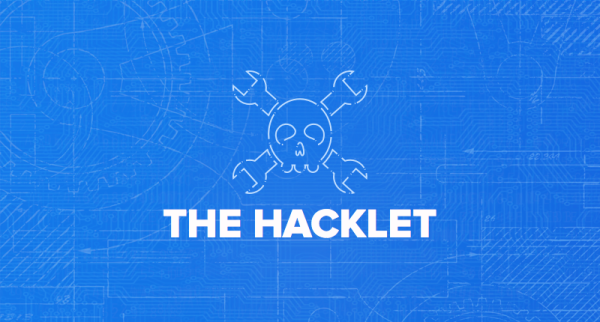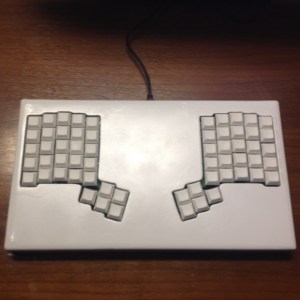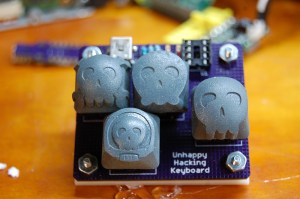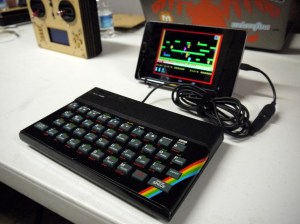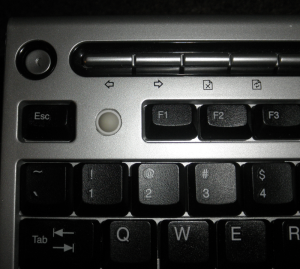After a hard Saturday at World Maker Faire, some of the best and brightest in the Hacker/Maker community descended on The Holiday Inn for “Bring A Hack”. Created by [Jeri Ellsworth] several years ago at the Bay Area Maker Faire, Bring A Hack (BAH) is an informal gathering. Sometimes a dinner, sometimes a group getting together at a local bar, BAH is has just one rule: You have to bring a hack!
[Sophi Kravitz] has become the unofficial event organizer for BAH in New York. This year she did a bit of live hacking, as she converted her Wobble Wonder headgear from wired to wireless control.
[Chris Gammell] brought his original Bench BudEE from Contextual Electronics. He showed off a few of his board customizations, including making a TSSOP part fit on the wrong footprint.
 [Windell and Lenore] from Evil Mad Scientist Laboratories brought a few hacks along. They picked up an old Radio Shack music player chip at the Electronics Flea Market and built it up on a breadboard. Also on display was their new EggBot Pro. The Pro is a beautifully machined version of the eggbot. Everything is built strong to withstand the sort of duty an EggBot would see at a hackerspace or public library. [Windell] was full of surprises, as he also gave everyone chunks of Sal Ammoniac, which is a great way to bring the tin back to a tired soldering iron tip. The hack was that he found his Sal Ammoniac at a local Indian grocery in the Bay Area. Check out [Windell’s] blog entry for more information.
[Windell and Lenore] from Evil Mad Scientist Laboratories brought a few hacks along. They picked up an old Radio Shack music player chip at the Electronics Flea Market and built it up on a breadboard. Also on display was their new EggBot Pro. The Pro is a beautifully machined version of the eggbot. Everything is built strong to withstand the sort of duty an EggBot would see at a hackerspace or public library. [Windell] was full of surprises, as he also gave everyone chunks of Sal Ammoniac, which is a great way to bring the tin back to a tired soldering iron tip. The hack was that he found his Sal Ammoniac at a local Indian grocery in the Bay Area. Check out [Windell’s] blog entry for more information.
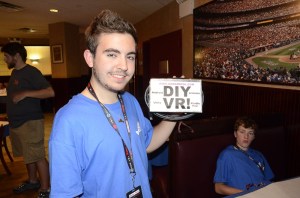 [Cal Howard] brought his DIY VR goggles. [Cal] converted a Kindle Fire into an Oculus Rift style head mounted display by adding a couple of magnifying lenses, some bamboo kebab sticks to hold the lenses in place. Judicious use of cardboard and duct tape completed the project. His current hurdle is getting past the Fire’s lack of an accelerometer. [Cal] planned to spend Sunday at Maker Faire adding one of his own!
[Cal Howard] brought his DIY VR goggles. [Cal] converted a Kindle Fire into an Oculus Rift style head mounted display by adding a couple of magnifying lenses, some bamboo kebab sticks to hold the lenses in place. Judicious use of cardboard and duct tape completed the project. His current hurdle is getting past the Fire’s lack of an accelerometer. [Cal] planned to spend Sunday at Maker Faire adding one of his own!
As the hour grew late, everyone started to trickle out. Tired but happy from a long day at Maker Faire, the Bring A Hacker partygoers headed back to their hotels to get some sleep before World Maker Faire’s final day.


